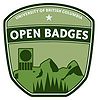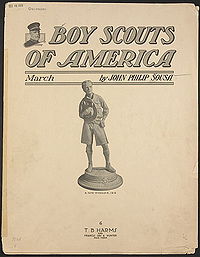Documentation:Open Badges/Learn/History of Badges
History of Open Badges
Where did the idea of Open Badges come from? Arguably, the Open Badges concept originates in the 20th century Scouts organization, which issued embroidered badges to children. The fundamental concept of this program is that predetermined achievements, like learning how to build a fire, are recognized with a badge.
In 2005, badges underwent a transformation at the hands of the video game industry. More specifically, it was Microsoft's Xbox Achievement One system which translated the idea of icon-based recognition into the digital realm by issuing badges for feats accomplished in the console. In this digital version of badges, a player displays their accomplishment in a profile of their online avatar.
2008 marked the beginning of badges as credentials. A website called Stack Overflow invited the public to post their programming questions on the site, which were answered by programmers competing to gain votes that indicated their answer worked. After acquiring a certain number of votes, programmers earned one of several badges. As the site gained momentum, the prestige of a high-ranking badge was such that it became recognized as a professional credential.
Erin Knight and Les Orchard separately envisioned a world where badged credentials were commonplace (Knight, 2010; Orchard, 2010). At the time, both Knight and Orchard were affiliated with Mozilla organization, which in addition to building open source web browers like Firefox, has a mandate of political and social engagement. Badges fit with this mandate because it strengthens the system of online learning, which generally increases awareness of political and social issues.
In August 2010, Mozilla Executive Director Mark Surman writes his first blog post about badges, noting they are issued by various websites but function awkwardly as credentials, because potential employers must go ‘traipsing all over the web’ (2010) to view an individual’s badges. As a solution, Surman proposes that badges should be transportable from one website to another, and that each individual should have a place for displaying and storing their badges. A year and a month later, Mozilla makes this idea reality, producing transportable badges embedded with metadata relating to the earning of the badge, along with the Mozilla Backpack, a free account for storing badges.
The values of the Mozilla community converged with post-secondary educators who believed in the Open Education Resource movement. The philosophy behind this movement is that educational materials, such as syllabi, assignments and video lectures, should be made freely available to the public. Open Badges strengthen the OER movement by providing recognition to those who learn from the university's freely available resources.
References
- E Knight. (2010, December 27). Certification’ Revisited (#1) [Web log]. Retrieved from http://erinknight.com/post/2488034871/certification-revisited-1
- L Orchard. (2010, July 22). Why Does Mozilla Need a Badger? [Web log]. Retrieved from http://decafbad.com/2010/07/badger-article/
- M Surman. (2010, August 12). Experiment: badges, identity and you. [Web log]. Retrieved from http://marksurman.commons.ca/2010/08/12/badges-identity-and-you/
- MIT OpenCourseWare. (2015, September 11). In Wikipedia. Retrieved from https://en.wikipedia.org/wiki/MIT_OpenCourseWare

